
Myra Laramee [MEd/92, PhD/13]
Lifetime Achievement
A legacy that will echo for generations
She was a grad student when her grandfather visited her in a dream. He told her to go to the computer and write his name on a page. So, Myra Laramee dreamily got up and did just that. “And the image of these different people that I met along my way kept coming, kept coming, kept coming, and I kept typing them and I kept typing them. And in the morning when I was done at sunrise, I had 103 people.”
The prolific educator shares this anecdote shortly after teaching a Saturday morning university course, in which she instructs fellow teachers on how to integrate Indigenous ways of knowing and doing into their classes. Her course is so popular she had to cram a few more students in this year.
“I’m humbled to carry this knowledge, but it doesn’t come from one territory, or from one Knowledge Keeper, it comes from those 103 people who influenced me to be a better person. I took what they taught me, and I share it with other people and I’ll do that ’til the day I die. And then they’ll remember me. And they’ll start the journey of sharing what I taught them, and that’s how legacies are born.”
Since 1976, Laramee, a member of Fischer River Cree Nation, has helped transform Manitoba’s education system as a beloved teacher, co-founder of the Aboriginal Teaching Circle, administrator, counsellor, mentor, Traditional Indigenous Knowledge Keeper and creator of no fewer than 12 guiding documents on how Manitoba can infuse Reconciliation, Indigenous languages and Indigenous-centered content into curricula. Her efforts have touched UM through her service as Elder in Residence, a professor, a member of the Dean’s Aboriginal Education Task Force, and in her work on the Post Secondary Partnership Group for Manitoba Education and Training. In short, she possesses exceptional, sought-after wisdom that she’s shared with groups across the world.
Laramee says she’s so dedicated to enhancing teaching and learning because she believes a lack of knowledge is a cancer that must be dealt with.
“It creates a sickness amongst people,” she says, “and it’s bad when we put our actions into work with lack of knowledge. A lack of knowledge is a disgrace and it’s your problem. And there’s 100 ways to learn and to change.”
Read more from her interview
What is something you have learned from your students?
The potential for humanity to be good.
What makes a good learner?
Dad used to tell us that the knowledge you take into your brain, you have to do some work with that knowledge. You have to figure out what that knowledge is there for. And so part of that is to take that knowledge down to your heart. And going through that journey, you’re going to trip over all the things that have kept you—wanted to keep you—from being successful. And once you understand what is standing in front of you trying to stop you, you can sidestep it and go ahead. And so you begin to learn, ‘Hey, this is what this knowledge is for and this is what I can do with it.’
In Grade 11 your high-school guidance counsellor told you to quit school because they thought you wouldn’t amount to much. How does such an incident affect you?
My mother and my father…encouraged me to keep going and do things in spite of people, not because of people. That’s a huge, huge mantra: In spite of, not because of. My dad never, never let it be okay to blame others. He’d say, ‘Look in the mirror and know who you are.’ My mother would say, ‘Stand up you girls and be the best women who you were meant to be.’
One major impact you’ve had on the world came from a dream you had in 1990, in which the concept of Two Spirit came to you. This is a term now used across the globe. Can you tell me more about how this came about?
When I was given that dream, it was talking about people who held an understanding of male energy and female energy because those spirits kept changing—facially—into a male and female while they were talking to me. A lot of people think it means to know what it means to be gay. But it’s not that at all. It’s more.
The sacredness of Two Spirit is to see the world from two directions. You need to look down the middle, between the two of them, and see God’s truth. When you see that truth, then you can open your mouth and say something. Until then, shut the frig up.
I didn’t share this for people to use it. I shared it because I had the dream, but it went viral. Kids in the UK on the streets of London want to call themselves Two Spirit, but I don’t have the right to give that permission. I never intended it to go that far. I wanted people to know that there were people who have responsibilities in our communities and villages, who have the capacity to look beyond sexism, racism—any kind of “ism” you want to put down on the table—because the ability of those people was to stop those things from happening. It was the job of those people to not let any of those “isms” have a life.
People appreciate your no-nonsense approach. Do you have any advice to young alumni?
Get off your butts and do what you were meant to do. We’ve got to encourage our beings not to give up, give in, sit down or stop doing it.
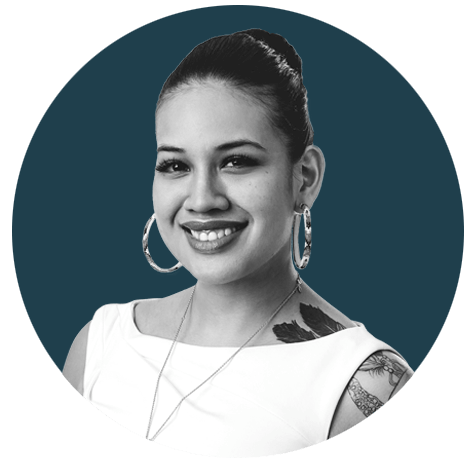
Ashley Richard [BComm(Hons)/17]
Outstanding Young Alumni
An advocate for Indigenous peoples
When Ashley Richard was four years old her grandmother Mary, a revered Elder and community leader, told her the meaning of her spirit name, Forever Woman. And she said, “My girl, it means you’re going to grow up to be a powerful woman, even more powerful than me.”
But as a teen, Richard would stray from that teaching, leaving Winnipeg and experiencing abuse and pain and homelessness. When she returned, Mary was terminally ill yet solely concerned with her granddaughter’s well-being, strangely convinced she had been in a terrible car accident. But it wasn’t until after Mary’s funeral that Richard found herself in a vehicle that smashed head-on into a tree; she awoke in a CT scanner in hospital. “I don’t know how she knew about this car accident, but it makes me trust that she knew what was going to happen for me, and that’s why I put so much faith in that teaching.”
At 31, this Métis, Ojibway and Filipina woman is now bringing truth to her grandmother’s vision, as a champion of Indigenous youth and a driver of positive change. While at UM, she learned the value of getting involved through her work with groups such as the University of Manitoba Indigenous Commerce Students—and for the last decade she has been advancing Indigenous economies and inclusion. Briefly, she has worked for the Treaty Relations Commission of Manitoba, hosted dialogues with former TRC commissioner Justice Murray Sinclair [LLB/79, LLD/02], co-founded an Indigenous comedy festival and the magazine Red Rising, joined Red River College’s Board of Directors as its youngest member, and volunteered as chair of the Winnipeg Foundation’s Walking Together Grants. She is now leading the National Indigenous Hub for the Women Entrepreneurship Knowledge Hub.
“When you do look at all the different things that I’ve done,” she says, “it really is all over the place. But to me, it’s all tied together by advancing Indigenous voices in different spaces.”
Read more from her interview
You’re doing a lot. Is there something you’re particularly fond of, or something you have yet to do but want to try?
I’m working on a few initiatives right now, like a housing initiative for Indigenous women called WellNest, as well as a menstrual awareness podcast that I’m excited about, but those are just starting to get off the ground and we’re developing articles of incorporation and looking for partners. My immediate dream is to get these going, but my long-term dream and something I’ve been really passionate about is Indigenous comedy and running comedy events like I was doing before the pandemic, called Laughter is Medicine. I love comedians. I love how laughter is medicine.
You seem driven to do so much. Have you always had this ethic, or did people at UM or elsewhere help you cultivate it?
When I was working with Treaty Commissioner Jamie Wilson [MEd/09], he constantly challenged me to take on new projects. He was always introducing me to people who he thought might, you know, influence me in a positive way.
I owe a lot to the Indigenous Business Education Partners program and its director Peter Pomart [MBA/17], too. He’s another person who just pushed me and supported me. I ended up getting a scholarship because he told me to apply and I didn’t want to because at that time I didn’t believe that good things happened to me and I just didn’t even want to bother trying and then being let down. And he was like, “No, you have to apply for this.” I ended up getting the scholarship. He supported me through big problems, little problems and everything in between.
Do you have any advice to younger students and alumni?
You can literally do anything, and you can make a career or an initiative out of something that you love, like Indigenous comedy for me. I’m not a comedian, I don’t do stand up—like, maybe one day I will—but I just love that feeling of being in a theatre and a room full of Indigenous people making each other laugh. And you know, one day I just woke up and thought: I want to do this.
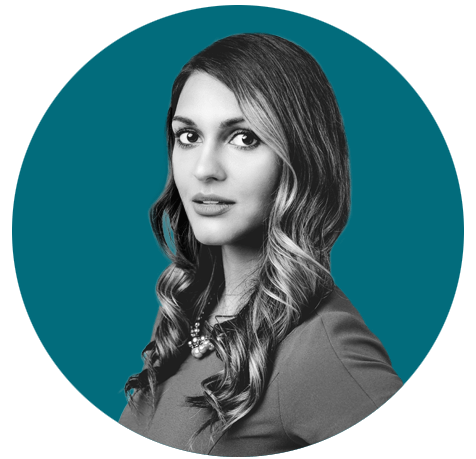
Dr. Nirvani Umadat [BSc/07, BSc/11, DMD/11]
Outstanding Young Alumni
The power of a healthy smile
Rain. Rain so thick it blurred the other side of the road. Rain so heavy the UM dental students’ van couldn’t drive up the mountain to the Guatemalan town where they were volunteering to pick them up. So the students set out on foot, dragging their gear down the slippery slope, stopping on occasion to help a farmer push a horse out of the mud. It was a tiring end to an exhausting day: When Dr. Nirvani Umadat, then a fourth-year dental student, arrived in the village hours before, she found hundreds of people waiting for her team, eager to access dental care.
“It seemed endless because when people hear that you’re coming they may take a day off of farming and bring their whole family. They make an incredible effort to come and so you don’t want to turn anyone away, so you just work and work and work. It’s physically taxing but you either embrace it or you don’t, and for me I embraced it,” says Umadat. “For me, volunteering to help others in these remote parts of countries is food for my soul.”
Since that trip as a student, the dental surgeon has given her time and expertise to provide care and bring new smiles to patients in remote communities of Panama, Peru, Nicaragua, Cambodia and Guatemala. And she has volunteered to train other dentists in Vietnam, Cambodia and Haida Gwaii. She has even found time to co-found the company BdIn, a digital platform that helps patient admissions in South America, and to complete a citizen-scientist astronaut training program, which eventually led her to advise the European Space Agency on how to maintain oral health in orbit.
Read more from her interview
You once said you went into dentistry because it seemed to combine science and art. How so?
There are some very blatantly artistic aspects of it, like when someone wants to change their smile. But if I’m doing a little filling for someone, they won’t know it looks good—they won’t really ever see it—but I will every time I look into their mouth and I just love going back and seeing that work, and just saying, like, ‘Oh my gosh, this looks so great.’ I really feel like it’s a privilege to be able to combine the science and the art for people: to use my abilities that I have to change somebody’s smile and in turn maybe change the way that they feel about themselves. It’s just such an incredible thing that we get to do for people.
Did you have a mentor at UM who helped you see something new in dentistry, or in life?
I did a research degree within dentistry and Dr. James Elliot Scott, [head of the department of oral biology], became my supervisor—he had such a laid-back yet analytical approach to his work. And I know that seems paradoxical, but he kind of just innately had the ability to be very detail-oriented and very focused yet relaxed because he was just so comfortable. I learned a lot from him, like you can be laid back while being a perfectionist if you just enjoy what you do. Sometimes the more easily you approach something, the less resistance you will meet, and you can get into a state of flow.
You’ve done quite a lot so far—what’s next?
I’m researching protocols and evidence that supports just how phenomenal our bodies are at not only healing themselves but pushing beyond the limits of what we consider a normal state of being. There are cases of people doing things that sound outlandish and foreign (like intermittent fasting) and with the paradigms that we have they appear almost unhealthy. But then, somehow, physiologically, it has an impact on them and they actually come out stronger or healthier. And so I want to understand the immense capability of our bodies from an oral health perspective, and how that translates to the rest of our bodies. Whether I write a book or make videos, I haven’t decided yet, but helping people realize how powerful they are in their bodies has become a really big passion of mine.

Chris Voth [BPE/20]
Outstanding Young Alumni
Pushing for inclusion
In 2018, Chris Voth battled back from an ankle injury and played some of the best volleyball of his life as a professional in the Czech Republic. His dad—a long-time volleyball coach and player—flew out to watch him on the court after not seeing him play for five years. “He just kept telling me like, ‘Wow I can’t believe how well you are playing now. You are a player. You figured it out,’ and I’m like, okay, that feels good.”
It was at UM where Voth honed much of his athletic—and leadership—skills as captain of the Bison volleyball team, before going on to play for Team Canada and on teams throughout Europe. But then he tore his abdominal muscles and shattered his pinkie, prompting him to engage with sports in a different way—one that will benefit many others.
In 2020, at only 29 years old, he was named assistant coach of Canada’s 2024 Olympic Team.
Voth says every athlete is worthy of unwavering support on and off the court, no matter the journey. He came out as gay in a Winnipeg Free Press article in 2014 at age 23, and three years later wrote candidly about his experience in a Huffington Post column—about how his team in Finland, upon meeting him, were meeting their first homosexual. They then became the first professional volleyball team to walk in a Pride parade.
As the former president of Out There Winnipeg, as a role model, mentor, motivational speaker, and founder of Pride without Prejudice Beach VB Tournament, Voth creates opportunities for others to be themselves.
He’s now embarking on a grad degree at UM with a thesis documenting stories of professional gay athletes, so we can better learn from their experiences.
Read more from his interview
Do you have any advice for people who may be coaching or teaching young kids who may be gay and need a space to come out?
I think a lot of people get nervous and uncomfortable because they don’t want to make a mistake, and that awkwardness leads them to act in a strange way as opposed to just keeping an open mind, being respectful and even acknowledging that they don’t know everything.
One of the biggest errs in judgement is that people will treat their recently-out teammate the same. They think, ‘Oh, well, I want them to know I accept them so I’m going to treat them the same.’ Superficially, that sounds like a pretty smart idea but it doesn’t actually acknowledge the fact that they came out. So, instead of, for example, asking their opinion on a girl because that is something you used to do with them, now you can ask them if they have any experiences with guys. Acknowledge the fact that they are gay, while still treating them the same. But again, there’s a lot of individual differences and there’s not going to be a one-size-fits-all approach.
Is it exhausting or empowering being a role model?
It only gives me energy. I get excited every time someone reaches out to me and tells me their story and if I impacted them in some way. I’m just honoured to have that ability to do that. And it was always my goal because I felt like if I would have had a role model, it would have been a lot easier for me to come out—to understand that it was possible—and so I just really want to be that person for someone else.
You’ve been at the UM for a while now. Have you taken any courses that really changed your mind on something?
Yes! I took a philosophy course with Neil McArthur—the only philosophy course I have taken—and it was the first class where I was excited to do the readings and I’d be angry when I had to miss class to go travel for volleyball. Every topic was so interesting and I just loved it.
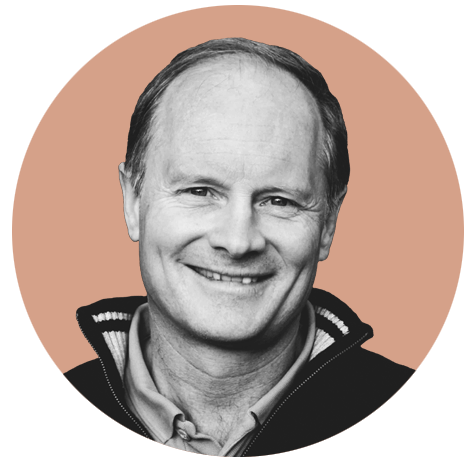
Dwayne Miller [BSc(Hons)/78]
Professional Achievement
The beauty of science
Working at the Whiteshell Nuclear Research Centre when he was a third-year UM student, Dwayne Miller had free run of a lab with his advisor on vacation—and he wanted to test an idea. Could he convert the toxins deemed the worst offenders in nuclear waste to a less-terrible form, using a process involving simple pottery clays? “I must confess I didn’t really know what I was doing yet,” says Miller, who today is one of the world’s foremost chemists. So he poured his caustic mixture into glass containers and left the sealed lab for the night. In the morning, he discovered the mixture ate through the glass and the nearby water lines, and the lab was filled with three feet of water.
“It looked like a cartoon,” he says with a laugh. “My advisor returned at that very moment to see his lab nearly destroyed by an undergraduate. I was forced to clean the lab with basically a toothbrush.” But Miller recovered his materials and realized his solution stored the toxins 100 times better than even methods used today. Ultimately, the technique didn’t prove cost effective, but it gave Miller an invaluable boost of confidence in his creativity. “All aspiring scientists need this experience, to believe they can do science and maybe even do something useful.”
To share the wonders of science’s creativity, he pitched an idea to UM in 2008 to get the public interacting with researchers. Annual “Science Rendezvous” events now run in 300 locations across Canada.
Today, his lab at the University of Toronto unlocks atomic mysteries many thought impossible, allowing us to see atomic motions in real time: the moment a molecule changes from one to others. The magnificent insights gleaned from this has, for instance, enabled the development of a laser scalpel for surgeons to operate on single cells—avoiding collateral tissue damage and scar tissue. And one day soon, because of his discoveries, researchers will be able to operate within a cell. His work will allow us to directly observe the biochemistry that drives living systems, which could lead to new drugs and earlier disease detection.
Read more from his interview
You’ve created technology that allows us to see atoms move in real time, which allows us to understand chemical processes in new ways. Frankly, I know there is a lot of excitement behind those words but I lack the education to grasp it. Can you help?
Just imagine you could watch two atoms fluctuate and witness the moment a bond breaks. You would witness the death of a molecule and its reincarnation into two new molecules. As a chemist, that’s the holy grail.
Chemistry is a race against time. You start with a molecule and you want to convert it into another molecule—let’s say a drug. But the number of ways to arrange atoms in space is mind-boggling large. So, in seeing how atoms move during a chemical reaction, you can determine the pathway that connects the starting molecule to the final one. You’re watching the very essence of chemistry.
It is simply amazing to observe this directly at the atomic level.
You’ve created six companies to develop technologies that first came to life in your lab. So it would seem your work is focused on applications, yet it is very fundamental. This is a debate in research funding: to fund basic research or to fund ideas with more direct applications. What would you say to funders of research reading this?
I think the message that comes from my career is that funding basic sciences is always a good idea. You never know, by the very nature, where it’s going to go. You can’t. There are many examples where investment in basic research has changed society. The problem is there’s a tendency to want to fund things that will lead to widgets. There’s always this question: Well, what’s it good for? Am I going to have a return on investment in funding basic science? You can never predict where basic science will take you, only that wherever we’re going to go, it’s going to be beautiful.
You have been recognized with so many honours, from the A.P. Sloan Fellowship to the Presidential Young Investigator Award and the Rutherford Medal in Chemistry. The American Chemical Society bestowed its top award on you. But of all the honours and accolades, which one is dearest to you?
The McNeil Medal for science promotion. I think it is every scientist’s duty to try and instill interest in the general public for science, and to explain it and to make it approachable. People will realize how science improves our understanding of the world and in so doing improve our place in it. Science is needed more and more today, not less and less as we’re trying to find a way to better live on Earth and to improve our relationship with it.
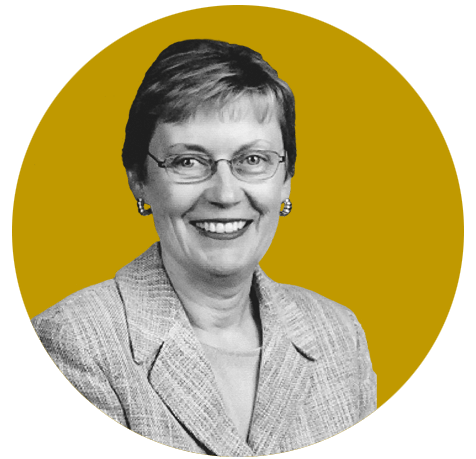
Dr. Norma Ramsay [MD/68]
Professional Achievement
Charting her own path
As one of the few females in the medical class of 1968, Norma Ramsay never let old-fashioned attitudes of some male professors dispirit her, and she didn’t do all her hard work out of spite either. “She isn’t that kind of person,” her husband Dr. Robert Ramsay [MD/68, BSc(Med)/68] says. “She just did her work. And it’s a bit ironic that the University of Minnesota”—which was, as Robert recalls, hesitant to interview her when she first applied there after graduating from UM—“later wanted her to be the Dean.” But Norma, by then an acclaimed pediatric oncologist who had won enough awards to fill a bookcase, declined that role. She retired early in 2004 because, she told Robert, “she saw too many big-shot males stick around too long.”
Today, a health condition prevents Norma from doing an interview, which is why Robert is speaking on her behalf. He shares with us how she found her life’s calling in the emotionally charged field of childhood cancer, and began treating the most difficult cases in the world using new bone marrow transfusion techniques she helped develop.
At the start of her career, the mortality rate for many pediatric cancers was roughly 50 per cent. Determined, Norma led research and treatment efforts to greatly reduce this number. She frequently published in prestigious journals but habitually declined the many conference invites she received because she was so committed to her family and patients. And by the end of her career, thanks to her team’s insights and innovations, the mortality rate in their patients averaged 20 per cent. And if treatments failed, she’d often drive to hospitals, no matter the time of day, to be with children in their last moments.
She was also committed to growing the U of Minnesota department she led since 1979—the Pediatric Blood and Marrow Transplant Program—into a renowned group of clinician-researchers who share their knowledge for the good of all children across the globe. This is her driving passion: finding ways to make a bigger impact.
Nearly 40 years ago she helped establish the Minnesota-based Children’s Cancer Research Fund, and in the decades since, she brought people together, inspired donors with her research and ideas (a legacy that continues through the endowed Norma K.C. Ramsay Lectureship), and helped it grow into a non-profit organization that now funds childhood cancer research across the U.S.
Read more from her interview
In her career, Norma was a leader in the fields of blood and marrow transplants, stem cell biology, and immunology. She mentored 60 fellows over her career, many female, and all of whom hold important roles in their respective hospitals and universities. Has she ever told you about the philosophies that guided her as a researcher or mentor?
There’s a quote by former U.S. President Harry Truman that sums up Norma: “It is amazing what you can accomplish if you don’t care who gets the credit.”
In her career, she just had a way of being—she wasn’t trying to prove anything by taking on responsibilities and she had no axe to grind. She was just encouraging to every student and would share her knowledge and time and effort. I think of it as being a very Canadian mindset.
Working in such a trying field of medicine could wear on someone fast. Is Norma an optimist or a realist?
Norma was a pioneer of sorts in getting big, collaborative teams to work on these cases, and so she wasn’t the sole person who had to bear the pain and the sadness—the failure—all by herself.
I’d say she’s more of a realist. I don’t think she ever got discouraged by it. So, I guess she’s optimistic too. She understood so much about her patients and their families. She is such a remarkable judge of character and I think she knew on a deep level where she stood with her patients and she had an incredibly empathetic understanding that made her so effective at dealing with families in these desperate situations.
Did she have any mentors at UM who inspired her?
She was inspired by so many. We had wonderful professors, like Lyonel Israels [MD/49, MSc/50] who made haematology a discipline. And the class of 1968 had incredible people in it who went on to do so much, like Ted Lyons [BSc/63, BSc(Med)/68, MD/68], who won this award a few years ago. Manitoba has an incredibly long history of creating very prominent people but it’s a humble university. If UM was Harvard, you’d hear about them all the time.
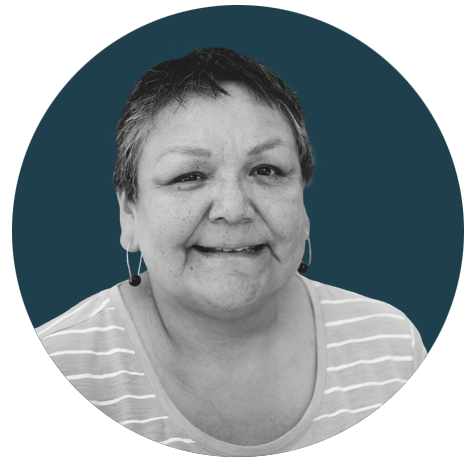
Helen Robinson-Settee [BEd/87, MEd/14]
Professional Achievement
A teacher from the start
When her Grade 6 teacher called Indigenous Peoples “savages” while teaching a lesson, Helen Robinson-Settee bit her tongue. After all, her mother had taught her to respect people such as teachers. “That was a pivotal time in my life. That was when I made a decision to be an educator,” she says. “And I don’t have any ill feelings towards the teacher because, you know, she probably didn’t have the training and didn’t have the teachings to know who First Nations people are.”
An Anishinaabe woman from the Dauphin River First Nation and member of the Mahkwa/Bear Clan, Robinson-Settee would become a teacher—and then some. She is currently the director of the Indigenous Inclusion Directorate with Manitoba Education, and has taught students from middle-school age up to teacher candidates in UM’s Faculty of Education. Bringing her influence to national and regional organizations, she is particularly proud of her involvement with the Manitoba Indigenous Youth Achievement Awards because “good stories—not misery stories—need to be told.”
Her commitment has been honoured by many, including the Manitoba Association of Parent Councils and the YMCA-YWCA, but her spirit seems to lift most when talking about her students.
“I love when students learn something and you see that expression of ‘Wow,’” she says. “I still remember my first year of teaching when I asked my Grade 6 students to write something and one boy—who I still keep in touch with—went home and wrote 17 pages, single-spaced, on both-sides on foolscap about his gerbil dying. It was touching. And when I saw how happy he was to hand it in, it just inspired me.”
Read more from her interview
You are currently a member of 14 boards and committees, including End Homelessness Winnipeg and the national kidney disease advocacy body Can-SOLVE CKD. Why are you so involved?
For me it’s about being an agent of change. Wherever I can impact change, I want to invest my time there. And if they value my contributions—my advice, the teachings I have been gifted and carry—then that is what compels me and motivates me to work with these organizations. They value it and I see change actually happening.
Manitobans are discussing the future of education and curriculums a lot these days. What would you like to see happen?
Obviously, because I’m the director of Indigenous inclusion for the Department of Education, I’m going to say that we should infuse Indigenous ways of knowing, being and doing into the curriculum and into our assessment—and that’s a vast trove of complex and diverse knowledge from our histories. I want to make sure that teachers are trained to understand our histories—and I say our histories because there’s different nations within First Nations and so we’re not all in one box, and then there are also the Métis and the Inuit. I want these histories, our languages, our contemporary lifestyles, taught because there are still people who see us as living in the past. I was told a story by the former treaty commissioner who was asked by a Grade 3 girl if he lived in a teepee. That was in this decade! So yeah, we have a lot of work to do.
You have taught so many but what are some of the things your mentors have instilled in you?
I have had so many mentors that I remember running out of space to thank them when I was writing my master’s thesis. But Myra Laramee, [a long-time educator/administrator and fellow DAA recipient], my rock—she taught me that it doesn’t matter the space, there is always room to sit in a circle and have a discussion.
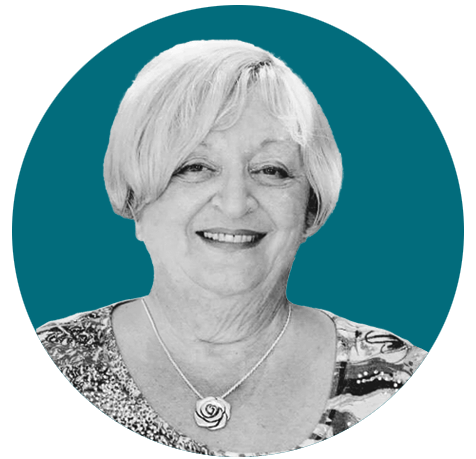
Zofia de Witt [CertEd/71 BEd/73]
Community Service
Bringing people together
When she stepped off the train in Winnipeg on that December evening in 1960, after many days of travel from Poland, 13-year-old Zofia de Witt was greeted by blowing snow and extended family she’d never met before. She felt simultaneously chilled and warmed by the reception. “It was all very exciting. As a child in Poland, if you had the opportunity to go to Canada or to the U.S., well, that was just something that was unheard of. It’s something that people dreamt about—the land of milk and honey with gold-paved streets—not realizing that when you got here it was a totally different situation. My parents were under that delusion too.”
But they managed to find work while their daughter found community in the Polish church, igniting a passion for volunteering that is still with her today.
She has served in an array of roles for various organizations, including chairing the Manitoba Ethnocultural Advisory and Advocacy Council, and serving as president of the Canadian Polish Congress for 15 years. Under her leadership, the Congress provided $250,000 to establish the Polish Studies Endowment Fund at UM, and it now sits at $900,000—nearing her $1-million goal. And de Witt is a key reason UM maintains Western Canada’s sole Polish Studies program—the only other being at the University of Toronto. These examples are mere snippets from her lifetime of volunteering for Canada’s Polish community, which prompted the Government of Poland to award her its Gold Cross of Merit in 2010.
She is also celebrated for bringing her collaborative spirit to the broader community, developing multiculturalism policies for the provincial government and, leaning on her 30 years of experience as a teacher, helping Manitoba integrate multiculturalism into its curricula.
Read more from her interview
You’re very proud of your Polish heritage and your advocacy for multiculturalism is well known. Are these views ones you developed yourself, or were they instilled in you by someone or something?
When I came to Canada with my family, I had a solid foundation as far as my Polish heritage was concerned. But what I saw here in Canada is you could be a proud Canadian and enjoy all the privileges and freedoms, but at the same time you have the opportunity—the option—to also nurture and celebrate your roots. And that is something that I was able to do with my volunteerism.
Why do you think it’s important for people to honour heritages and cultures?
You can’t just push aside your history and say, ‘Well, I’m Canadian now and these are the things I value.’ What you have been brought up with as a child will stay with you. But you also have to be able to adapt. We’re all here and we should try to understand and accept each other. We can realize that not everyone is going to see things the same way as us, but we can mutually respect each other—we all have the same aspirations so we’re really not that different. It seems my whole life has been bringing people of different backgrounds together in mutual understanding.
For over four decades you have volunteered for over two dozen organizations. What drives you to give so much of your time and energy?
I’m a social person and when I was a teacher I was dealing with so many children I began looking for ways to connect with adults to balance it out. There’s always been three parts of me: my family life, my professional life and my volunteer life. I knew that I had to fulfill all three to be a complete person.
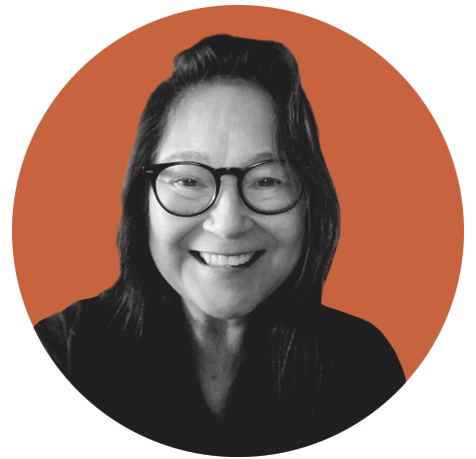
Lita Fontaine [DipArt/97]
Community Service
Finding balance through art
The blueprint is simple: a bulbous head, big feet, black spade ears and an adorable nose. That’s the outline for drawing the cartoon dog Snoopy. Not an obvious recipe for transformation but when an eight-year-old Lita Fontaine drew it for the first time on the chalkboard in front of her class, it ignited a passion. “My teacher congratulated me and gave me a beautiful experience. I had this sense of well-being and that’s when I decided to become an artist,” she says.
Today, Fontaine still draws Snoopy on the board for students in the Seven Oaks School Division, where she has been the artist-in-residence for 20 years. And she carries that lesson learned from decades ago with her in her service to the community: No gesture is too small to make a lasting difference in someone’s life.
Fontaine is a Dakota/Métis/Anishinaabe woman, with band affiliations in the Sagkeeng and Long Plains First Nations, who grew up in Winnipeg, and whose artwork explores her experiences living as an Indigenous female in a colonial world. Her mother, a residential school survivor, was raised by nuns and Fontaine would practice Catholicism but also go to powwows, taking the best from both worlds.
“I grew up with two cultures, with two perspectives. I looked for balance. Psychologically, it all comes naturally because I’m an identical twin too, and I’m left-handed and my sister is right-handed.”
When she saw a lack of Indigenous perspectives in the local art scene, she did something about it. In 1996, she co-founded the Urban Shaman Contemporary Art Gallery in Winnipeg, developing an Indigenous-artist-run centre that’s now one of the foremost venues of its kind in Canada.
While Fontaine is a renowned artist, her greatest accomplishments emanate through the many young creatives she has guided and nurtured. A tireless volunteer and mentor, she is a beacon for the community who is quick to share her expertise with the next generation.
Read more from her interview
Your work often explores concepts of racism. And you mentioned how people acting racist towards you has increased your tolerance. Can you explain?
You eventually learn to laugh about it, and you learn tolerance. All my life I have experienced the hurts and injustices of racism. I just built a strength within myself from it. Watching somebody being racist in front of me, I just think to myself, ‘Gee, do you know what you’re doing?’ I’ll stand up to it now and if something needs explaining, I’ll explain it or ask them to apologize if I think it went too far.
This ability must have taken you years to cultivate. Do you have any advice to the younger generations who may be reading this?
Find out who you are first. Get to know your identity, your culture, your Nation as a First Nations person. This way you’ll know what direction you’ll go. It’s fine if you feel lost or you don’t know if you’re going left or right at first—just make an effort to learn. Also, it’s always a good idea to carry a pencil, a sketch pad or notebook because you never know when an important idea will arise or there will be a beautiful scene you want to capture.
You have been an educator and mentor to so many through your community work. What is a driving philosophy you try to instill in the hundreds of young artists you’ve inspired?
Everyone has special gifts—be it through the visual arts, performing arts, music or even culinary arts. These gifts are medicines. As an Indigenous artist, I like to go within myself and then create something beautiful to help myself heal. It becomes my medicine. Sometimes, the best medicine is within ourselves. If you can find the tools in your life that allow you to connect your mental and spiritual and physical sides, you can heal a lot. Explore what is inside you.
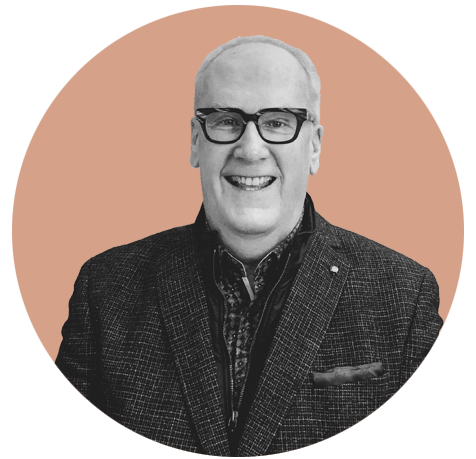
Doug Harvey [BComm(Hons)/75]
Community Service
‘A society of giving’
Aphorisms fly out of Doug Harvey’s mouth. Then self-depreciating laughter. “Maybe I could write a book about them,” he muses. “It would be a short book, and not a bestseller, but I think it would give us a laugh.”
A prostate cancer diagnosis in 2015 has not dampened the 68-year-old’s optimistic view on life. He abides by four pillars: his family, his business, his community and his well-being. “I’ve always tried to live my life so the funeral hall is packed. If it doesn’t look like it’s going to be packed, I tell my kids to get a smaller hall,” he jokes. “But you know, people don’t go to a funeral because you had a big house or you made a lot of money. They go because you’ve had an impact on their lives. I don’t measure people’s success in what they have. I measure it in what they gave to others.”
Harvey is committed to his city. Some highlights from a lifetime of impact: He helped bring many capital projects in Winnipeg to fruition, including the Canadian Museum for Human Rights, the Assiniboine Park Conservatory, and Qaumajuq at the Winnipeg Art Gallery. He was involved with CancerCare Manitoba Foundation for more than 15 years. He chaired the construction of Richardson International Airport. He co-chaired a tourism campaign that increased visitor spending by about $15 million in Winnipeg alone and he helped create and keep 4,000 jobs in the city as chair of Yes! Winnipeg Investor Council.
Whether it’s in his role as CEO of Maxim Truck & Trailer or volunteering for a board, he leads by example. When Harvey joined FortWhyte Alive’s board he became a significant donor without prompting, and when one of its campaigns stalled trying to complete the final 10 per cent of its goal, he asked what was needed, and donated it himself. Can do. Will do…his philosophy, and perhaps the title of his future book.
Read more from his interview
If you could dream big and imagine any impact you wish to have in our community, what would it be?
Ten people doing good work in the community is a lot better than one person doing good work so I always wonder how I can influence the people around me. I would want to create a society of giving, where everyone is following their own interests and passions and creating a difference.
After graduating from UM you got a job that looked great on paper but it was not great for you, so you left. What advice do you have for others who find themselves in a similar place?
I was making very good money and I had a company car and I had just been through a four-year business degree so you know, isn’t that what I trained for? But you soon find out there’s way more than that. If you don’t like what you’re doing, you owe it to your employer and to yourself to move on and find a role that you love to do. You only got one shot at this. Do it right and make yourself happy.
It always seems that tales of great hijinks in the history of UM are related to the years surrounding your generation. Do you recall any?
I could tell you many things off-the-record. But we had three intramural, inter-faculty hockey teams and we always had ice on Friday mornings and then it was beers afterwards and sometimes we went back to school, sometimes we didn’t, and sometimes professors joined us. I made so many great friends and had so many wonderful professors who helped me and influenced me greatly in all I have done since university.

















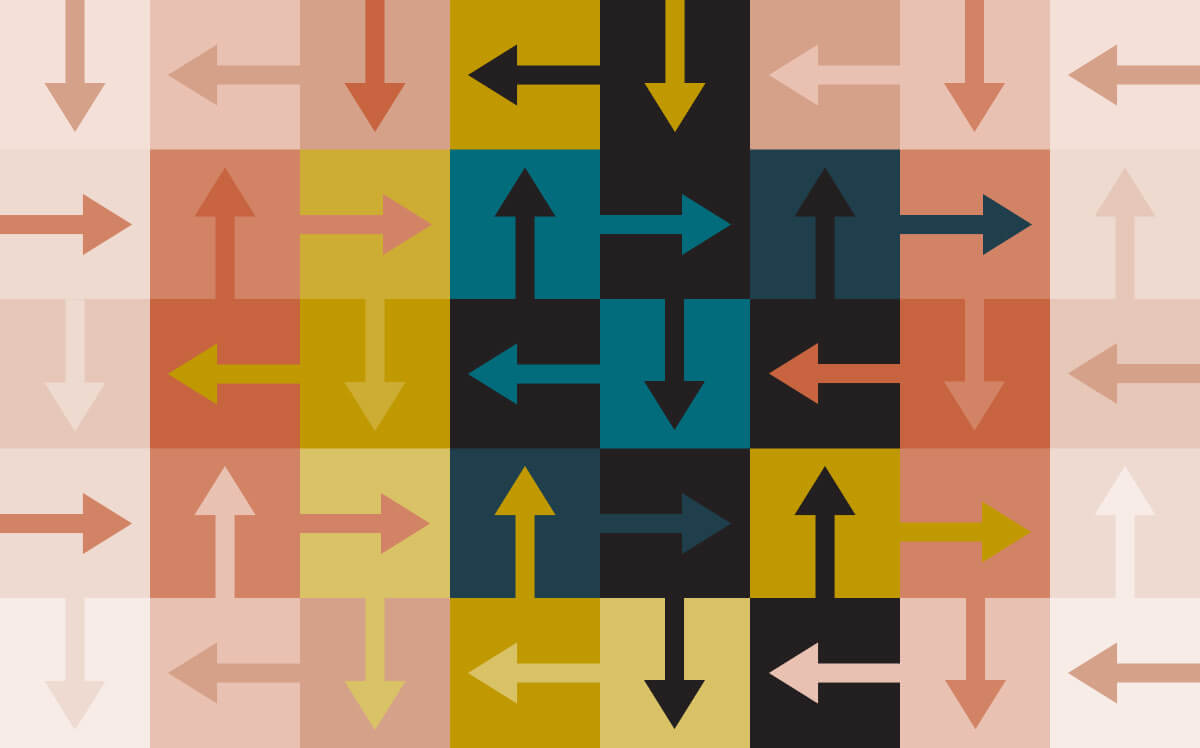
It is great to see the diversity of the honorees. Great Job U of M
So glad to see Myra Laramie included. She is a fantastic woman as well as an Aboriginal Elder… Her teachings and influence will extend into future generations… well beyond her years! Way to go Myra!